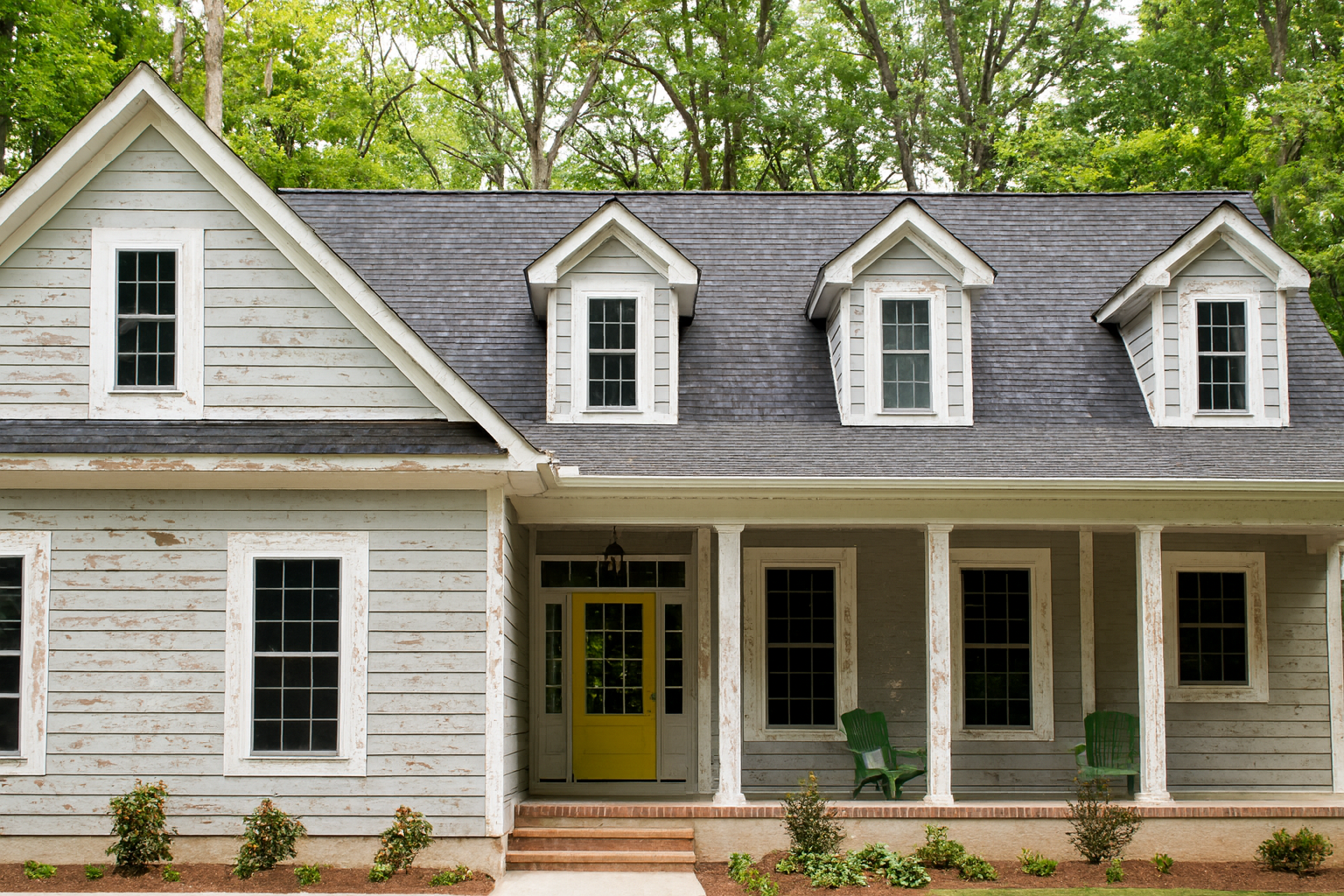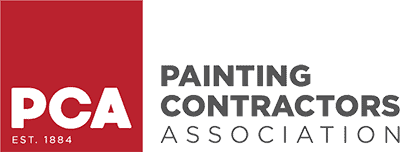Chipped paint is one of those problems you notice right away. It can make a freshly painted wall or trim look neglected, and if left unchecked, it may even expose your drywall, wood, or plaster to bigger issues.
If you’ve been wondering how to repair chipped paint inside or outside your home, you’re not alone. Homeowners in Gainesville, VA deal with chipped paint from daily wear, leaks, humidity, and even furniture bumping against walls.
This article breaks down what chipped paint means for your home, how professional painters in Gainesville, VA handle the repair, and why getting it fixed correctly keeps your home looking sharp while protecting its surfaces.
Key Takeaways:
- Chipped paint exposes drywall, wood, or plaster to damage if not repaired quickly.
- Moisture, leaks, and poor prep are the most common causes of chipped paint.
- Professional painters in Gainesville, VA use tools like sandpaper, putty knives, and primer for smooth repairs.
- Repair steps include scraping, filling with spackling paste or joint compound, sanding, priming, and repainting.
- Fixing chipped paint early prevents peeling, water damage, and bigger repair costs later.

Why Chipped Paint Happens in the First Place
Before jumping into how to repair chipped paint, it helps to understand why it happens. Paint is more than color; it’s also a layer of protection for your walls, trim, and siding. Once it chips, that surface becomes exposed.
Here are the most common reasons we see chipped paint in Gainesville homes:
- Moisture problems – A small leak near a bathroom, kitchen sink, or window can weaken paint layers.
- Surface prep issues – If old dust, oil, or adhesive was left behind during the last paint job, paint may peel faster.
- Aging paint – Older latex or enamel paint eventually wears thin and cracks.
- Environmental factors – Heat, humidity, and pressure from everyday use cause gradual breakdown.
- Underlying material – Wood, drywall, and plaster expand and contract differently, creating stress on painted surfaces.
Addressing the cause is just as important as the repair itself. For example, fixing chipped paint caused by a leak without solving the water problem will only lead to more paint failure later.
Materials and Tools Used by Professionals
Professional painters in Gainesville, VA use specific tools to repair chipped paint so the finish is smooth and durable. Each one plays a role in restoring your wall, trim, or ceiling:
- Putty knife – For applying spackling paste or wood putty.
- Scraper or razor – To carefully remove loose paint edges.
- Wire brush – Helpful when dealing with rust or flaking paint.
- Sandpaper – Fine grit paper is used to smooth the surface after patching.
- Microfiber cloths – Wipe away dust and sanding residue.
- Masking tape and plastic sheeting – Protect nearby windows, floors, and trim.
- Primer and paintbrush – Primer prepares the surface before applying a new coat of latex or enamel paint.
These tools, combined with joint compound, spackling paste, or putty, help rebuild the chipped area so it blends with the surrounding wall.
How to Repair Chipped Paint?
When explaining how to repair chipped paint, homeowners are often surprised at how detailed the process is. Professional painters don’t just “cover it up” with a brush. Each step matters:
- Scraping away loose edges. Loose paint is carefully removed with a scraper or wire brush until the remaining surface is solid.
- Cleaning the area. Dust, rust flakes, and old adhesive are wiped away with a microfiber cloth and sometimes water. This helps paint and primer adhere properly.
- Filling the chip. Depending on the surface, spackling paste, wood filler, or joint compound is applied with a putty knife. This fills the depression left by the chip.
- Drying and sanding. Once the patch dries, sandpaper is used to create a smooth finish. Pressure is kept light to avoid damaging drywall or wood.
- Priming. Primer creates a uniform base so the final paint doesn’t absorb unevenly. Applying coats of primer also helps waterproof and seal the repaired spot.
- Painting. A carefully matched latex or enamel paint is applied with a paintbrush, roller, or in some cases spray paint for larger sections.
This layered approach protects against future peeling and helps the repair blend seamlessly.
Safety Considerations: Lead and Dust
Some Gainesville homes built before 1978 may have lead paint, which requires special handling. Professional painters use protective tools and disposal methods to avoid spreading lead dust.
Even in newer homes, sanding chipped areas creates fine dust particles. Using microfiber cloths, proper masks, and containment measures keeps your air safe and your home clean. This is one reason why calling a pro is always recommended.
Where Chipped Paint Commonly Appears
You may notice chipped paint in different areas of your home depending on age and use. Some of the most frequent repair spots include:
- Bathroom walls and ceilings where water and steam collect.
- Kitchen trim and cabinets exposed to heat, oil, and moisture.
- Windows and sills affected by condensation.
- Floors and baseboards where shoes, vacuums, or pets cause wear.
- Exterior siding where weather mistakes like ignoring rain exposure cause chipping.
Each of these requires different prep and products. For example, repairing chipped paint on wood trim may involve putty and enamel paint, while drywall often requires joint compound and latex paint.
Costs and Misconceptions
A common question is: how much to fix chipped paint on car vs house walls? While automotive touch-ups use enamel and polishing tools like a wheel or wire brush, home paint repair focuses on durability and safety inside your living space.
For homeowners, the cost of repairing chipped paint depends on the size of the area and materials involved. Small repairs are affordable, but when larger sections peel, repainting full walls or exteriors may be more cost-effective. Professional painters in Gainesville, VA help weigh those options. They will provide maintenance tips to avoid common painting mistakes in the future.
Final Thoughts on Maintaining Paintwork
Repairing chipped paint is not only about appearance but also about protecting surfaces from further wear. Whether the issue is on drywall, wood trim, or exterior siding, knowing how to repair chipped paint helps you understand why the repair matters and how professional painters in Gainesville, VA approach it.
By addressing small chips early, you prevent bigger paint failures later. Plus, with the right tools, primer, and paint type, the repaired area will last for years.
Here’s how our process works when you call us for paint repair and home improvement projects:
- Inspect the chipped paint and identify causes like leaks, rust, or moisture.
- Prepare the area by scraping, sanding, and cleaning with wire brushes and microfiber cloths.
- Apply spackling paste, wood filler, or joint compound with a putty knife.
- Prime the repaired surface with quality latex or enamel primer.
- Paint the area with durable finishes that match your interior design or exterior.
If you live in Gainesville, VA or surrounding areas like Chantilly, Reston, and Arlington, call us at 571-575-6818 for a FREE estimate. Let JC Custom Painting LLC restore your walls, trim, and siding with quality painting and repair services.
Common Questions About Chipped Paint
How do you fix chipped paint on a wall?
The process involves scraping, sanding, filling, priming, and repainting with matched paint.
How do you fix peeling paint?
Peeling paint is often a larger version of chipped paint. The same steps apply, but often a bigger section of scraping and sanding is required.
Can chipped paint keep spreading?
Yes. If left untreated, edges can lift further, especially if moisture, heat, or pressure continue to stress the area.

